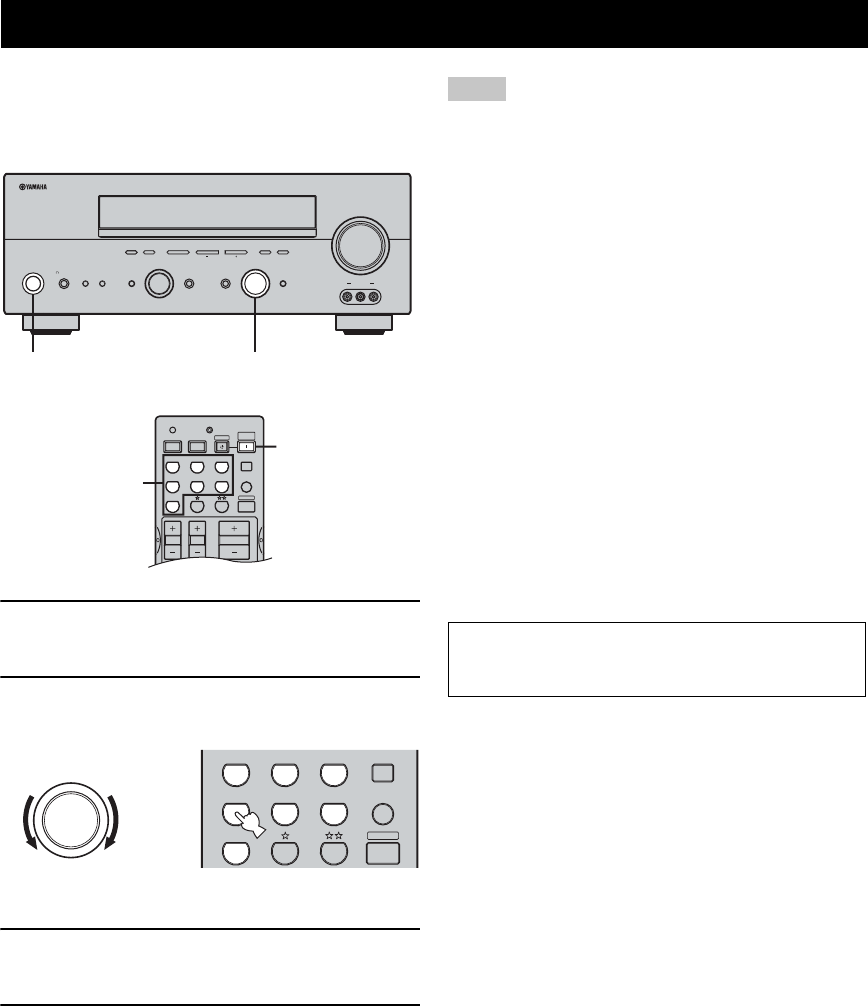
RECORDING
50
Recording adjustments and other operations are
performed from the recording components. Refer to the
operating instructions for those components.
1 Turn on the power of this unit and all
connected components.
2 Select the source component you want to
record from.
3 Start playback (or select a broadcast station)
on the source component.
4 Start recording on the recording component.
y
Do a test recording before you start an actual recording.
• When this unit is set in the standby mode, you cannot record
between other components connected to this unit.
• The setting of TONE CONTROL, VOLUME, “SP LEVEL”
(page 59) and the sound field programs does not affect recorded
material.
• A source connected to the MULTI CH INPUT jacks of this unit
cannot be recorded.
• S-video and composite video signals pass independently
through this unit’s video circuits. Therefore, when recording or
dubbing video signals, if your video source component is
connected to provide only an S-video (or only a composite
video) signal, you can record only an S-video (or only a
composite video) signal to your VCR.
• Digital signals input to the DIGITAL INPUT jacks are not
output to the analog AUDIO OUT (L/R) jacks for recording.
Likewise, analog signals input to the AUDIO IN (L/R) jacks are
not output to the DIGITAL OUTPUT jack. Therefore, if your
source component is connnected to provide only digital (or
analog) signals, you can only record digital (or analog) signals.
• A given input source is not output on the same REC OUT
channel. (For example, the signal input from VCR IN is not
output on VCR OUT.)
• Check the copyright laws in your country to record from
records, CDs, radio, etc. Recording of copyrighted material may
infringe copyright laws.
■ Special considerations when recording
DTS software
The DTS signal is a digital bitstream. Attempting to
digitally record the DTS bitstream will result in noise
being recorded. Therefore, if you want to use this unit to
record sources that have DTS signals recorded on them,
the following considerations and adjustments need to be
made.
For DVDs and CDs encoded with DTS, when your player
is compatible with the DTS format, follow its operating
instructions to make a setting so that the analog signal will
be output from the player.
RECORDING
EFFECT
PROGRAM
INPUT MODETONE CONTROLSTRAIGHT
SPEAKERS
PHONES
SILENT CINEMA
STANDBY
/ON
BA
MULTI CH
INPUT
VOLUME
INPUT
VIDEO L AUDIO R
VIDEO AUX
1 2
AUTO/MAN'L MONOMAN'L/AUTO FM
LEVEL
NEXT
SEARCH MODE
MEMORYFM/AMPRESET/TUNING
EDIT
A/B/C/D/E
l PRESET/TUNING/CH h
TUNING MODE
XM
CATEGORY
DISPLAY
TRANSMITCODE SET
STANDBY
SYSTEM
POWER
CD MD/CD-R
TUNER
V-AU XDVD
AMP
POWERPOWER
VOLUME
TV MUTE TV INPUT
TV VOL TV CH
AVTV
VCR
DTV/CBL
MULTI CH IN
SLEEP
1
2
(U.S.A. model)
INPUT
CD MD/CD-R
TUNER
V-AUXDVD
AMP
VCR
DTV/CBL
MULTI CH IN
SLEEP
or
Front panel Remote control
Notes
If you playback a video source that uses scrambled or
encoded signals to prevent it from being dubbed, the
picture itself may be disturbed due to those signals.


















